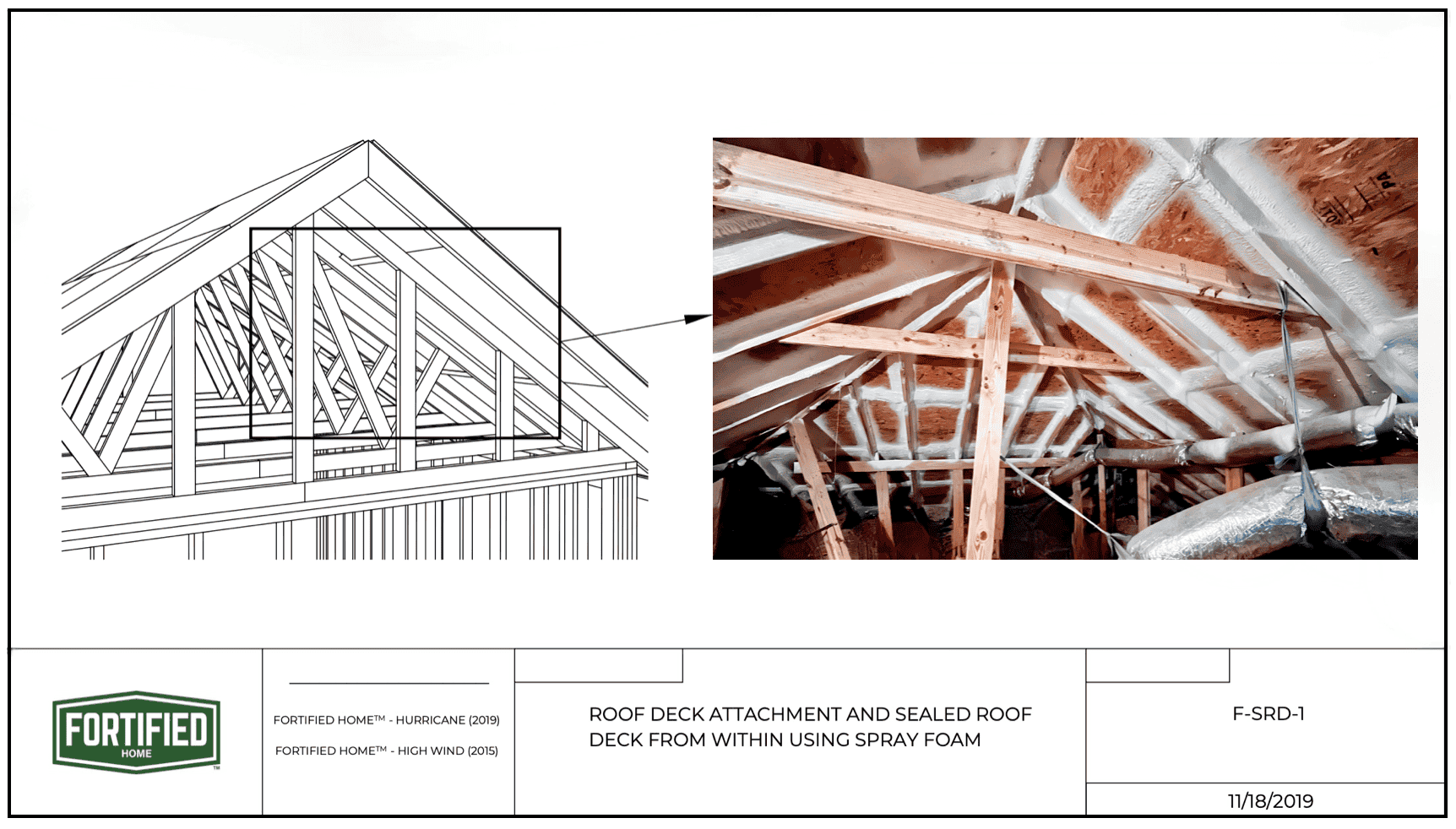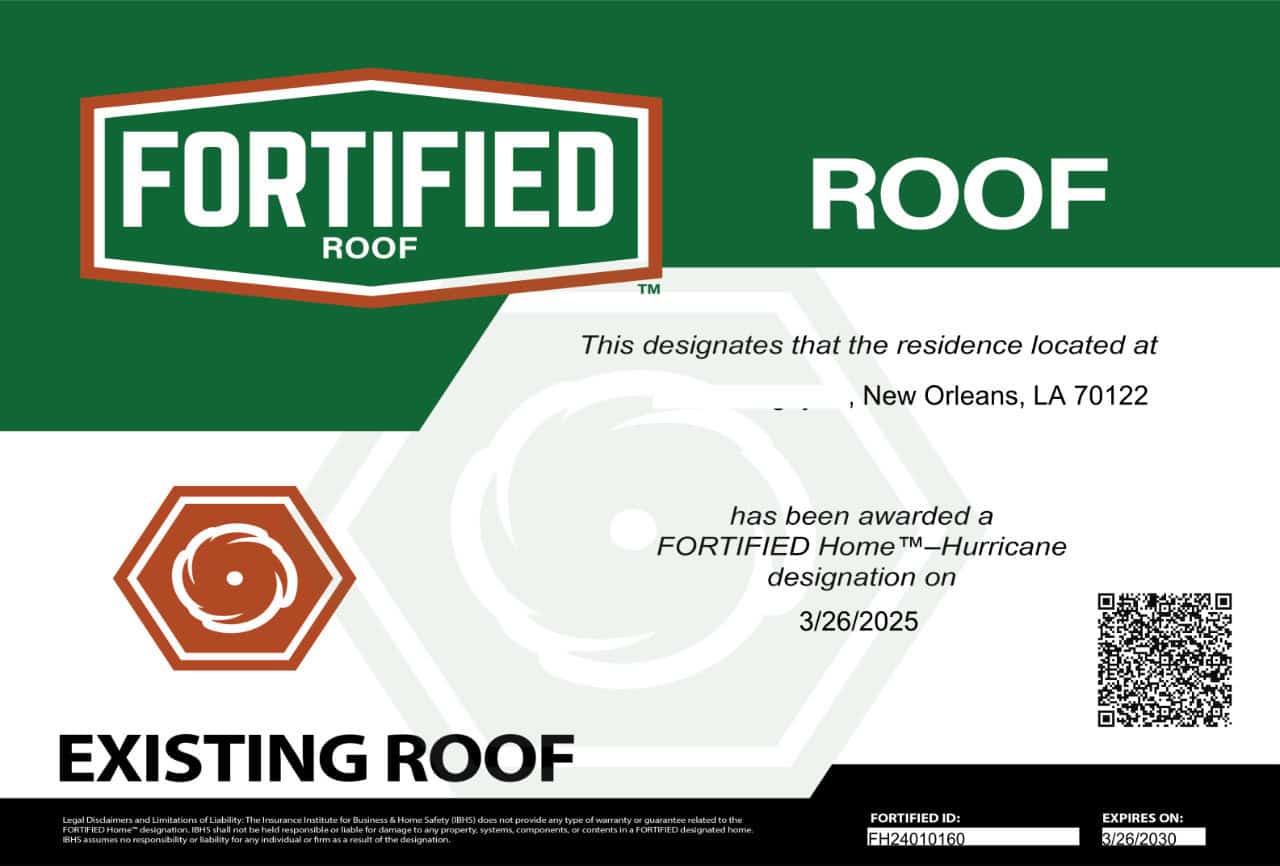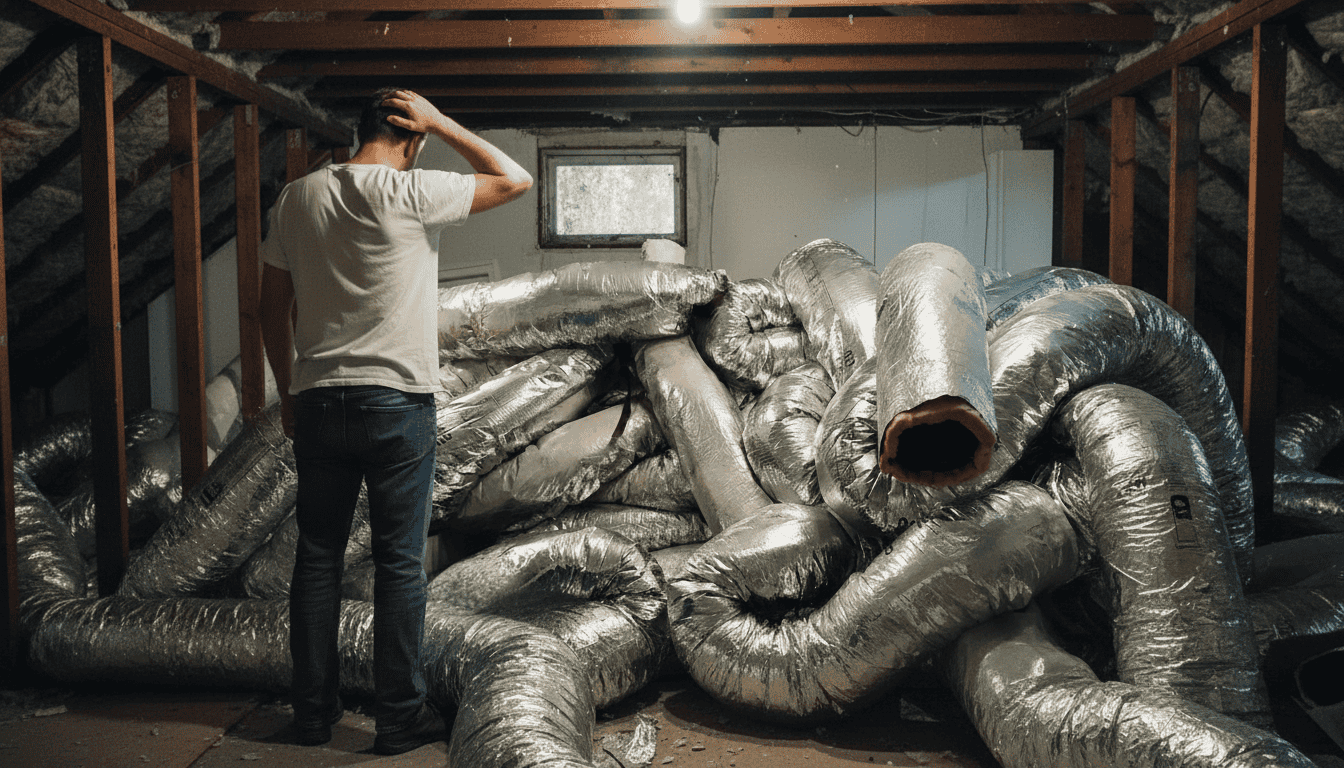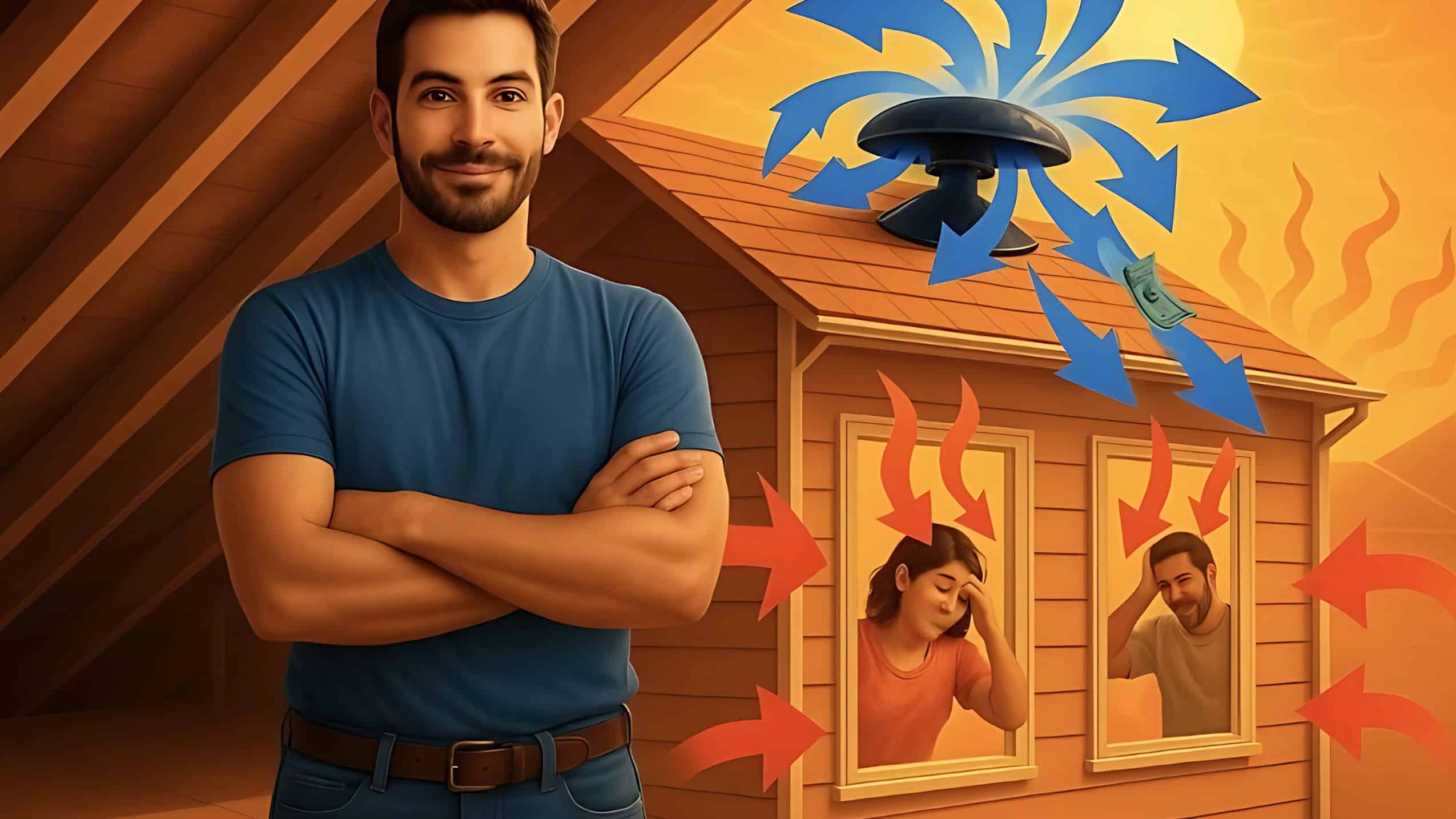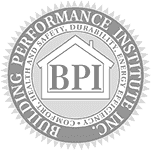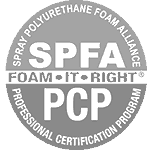FORTIFIED extends its excellence beyond our current codes in numerous ways. The program goes beyond the requirements of our current 2021 International Building Code (IBC) and International Residential Code (IRC) in several significant ways, with many years of history in neighboring states before it set foot in Louisiana.
FORTIFIED Has A Proven Track Record
Established in 2010, FORTIFIED is a voluntary set of beyond-code design, building, and retrofitting steps that enable home builders and roofing contractors to strengthen homes to prevent avoidable damage and financial loss caused by hurricanes, high winds, and hail. Click to learn more.
In 2011, IBHS (Insurance Institute for Business & Home Safety) began conducting wind tests for FORTIFIED roofs at their Research Center in Richburg, South Carolina, where they can simulate severe weather events with wind speeds reaching up to 130 mph. Click here to learn more.
FORTIFIED Is Scientific
FORTIFIED is designed to provide additional resistance to hurricanes, low-level tornadoes, and severe thunderstorms by implementing standards that exceed typical building code requirements. FORTIFIED requires testing to fail to determine the maximum capabilities of roofing assemblies rather than just meeting minimum code requirements. This approach ensures the buildings can withstand more severe weather events than those typically addressed by local building codes. Click here to learn more.
FORTIFIED homes are designed to withstand specific severe weather events that exceed typical building code requirements, including:
Category 1-3 hurricanes
High winds from severe thunderstorms
Tornadoes up to EF-2 strength
Hailstorms
FORTIFIED Third-Party Quality Assurances
The FORTIFIED program ensures quality control during installation through a comprehensive third-party verification process.
The key component of this quality control process is the requirement for a certified FORTIFIED Evaluator who serves as an independent, third-party inspector. These evaluators must meet minimum eligibility requirements and complete specialized certification training.
Smart Home America – Insurers Guide To FORTIFIED
During installation, the FORTIFIED Evaluator reviews the required documentation to verify that key performance elements are completed as if the assembly was tested. This verification ensures that the theoretical performance standards are implemented in practice.
Visit FORTIFIED Gulf Coast Certified Evaluators
The 5 FORTIFIED Roof Evaluation Steps
Initial Inspection – A certified FORTIFIED Evaluator thoroughly inspects your home to identify specific upgrades needed for your roof.
Documentation Collection – Is required throughout the construction or reroofing process.
Verification of Requirements – The evaluator verifies specific elements of the existing roof.
Documentation Submission – Reviewed by the Insurance Institute for Business & Home Safety (IBHS).
IBHS Review – A team of FORTIFIED experts at IBHS reviews all documentation to ensure compliance with standards.
Designation Issuance – Once requirements are met, IBHS issues a FORTIFIED certificate and sends it to the evaluator, who then delivers it to the homeowner.
FORTIFIED May Not Require Reroofing
The FORTIFIED program specifically addresses vulnerabilities in roof systems, which are traditionally considered weak links because building codes have not focused extensively on roof system performance. FORTIFIED closes this gap by providing requirements for secondary water barriers and enhanced roof protection.
In many cases, a secondary water barrier can also be achieved from the underside of the roof deck, thereby avoiding the additional labor and material costs of roof deck-top coverings that traditionally are assumed to be a requirement for a FORTIFIED Roof designation.
Depending on certain key features, you may have options for achieving the benefits of FORTIFIED.
The 3 FORTIFIED Spray Foam Alternative Steps
The overwhelming majority of southern Louisiana homes that have been reroofed after Ida are eligible for the FORTIFIED Sealed Roof Deck Supplemental Deck Attachment.
Other than the significant reduction in cost to qualify for the same FORTIFIED Roof Designation as reroofing, another benefit is that fewer Evaluator Steps are necessary, and the documentation collection process is minimal. Whereas there are 5 steps to qualify for a FORTIFIED Roof designation when installing a new roof, the spray foam deck attachment alternative requires only 3.
Suppose you had a new roof installed after Hurricane Ida. In that case, you may pay up to four times more to achieve the same FORTIFIED Roof designation and insurance discounts to tear off the existing new roof, then reroof again and add additional FORTIFIED steps versus the simplicity and cost-effectiveness of the Spray Foam Adhesive Sealed Roof Deck Alternative.
I Did Reroof After Ida
Great! If so, you may be able to skip the exorbitant price and additional weeks of reroofing headaches to achieve FORTIFIED Roof status if you are eligible for an IBHS alternative.
The Insurance Institute for Business and Home Safety has developed a FORTIFIED Sealed Roof Deck Supplemental Deck Attachment alternative that avoids the need for a costly new roof by properly installing an approved closed-cell adhesive on your roof deck.
IBHS 2020 FORTIFIED Home Standard lists eligibility for sealing and strengthening the roof deck with the Supplemental Deck Attachment alternative.
The existing roof cover shows no signs of damage or deterioration.
There is only one layer of roof covering.
The existing roof covering is estimated to have at least 5 years of useful life.
Adequate access to the attic allows the application of closed-cell spray urethane-based foam adhesives along joints between sheathing and Roof framing members and all seams between the roof sheathing panels.
The existing presence of a drip edge. Click to view the PDF.
“So, if my existing attic and roof meet the above criteria, applying this Supplemental Alternative provides the same strength, water shield, and insurance benefits. There must be some difference between this method and installing a new FORTIFIED Roof?” Correct, in fact, there is one difference. The FORTIFIED Certificate states EXISTING ROOF at the bottom left.
Whether installing a new FORTIFIED Roof or taking a significantly cost-reduced retrofit spray foam adhesive alternative, an IBHS Certified Evaluator is required to ensure your roof is truly FORTIFIED. Click to learn more about IBHS FORTIFIED Home.
